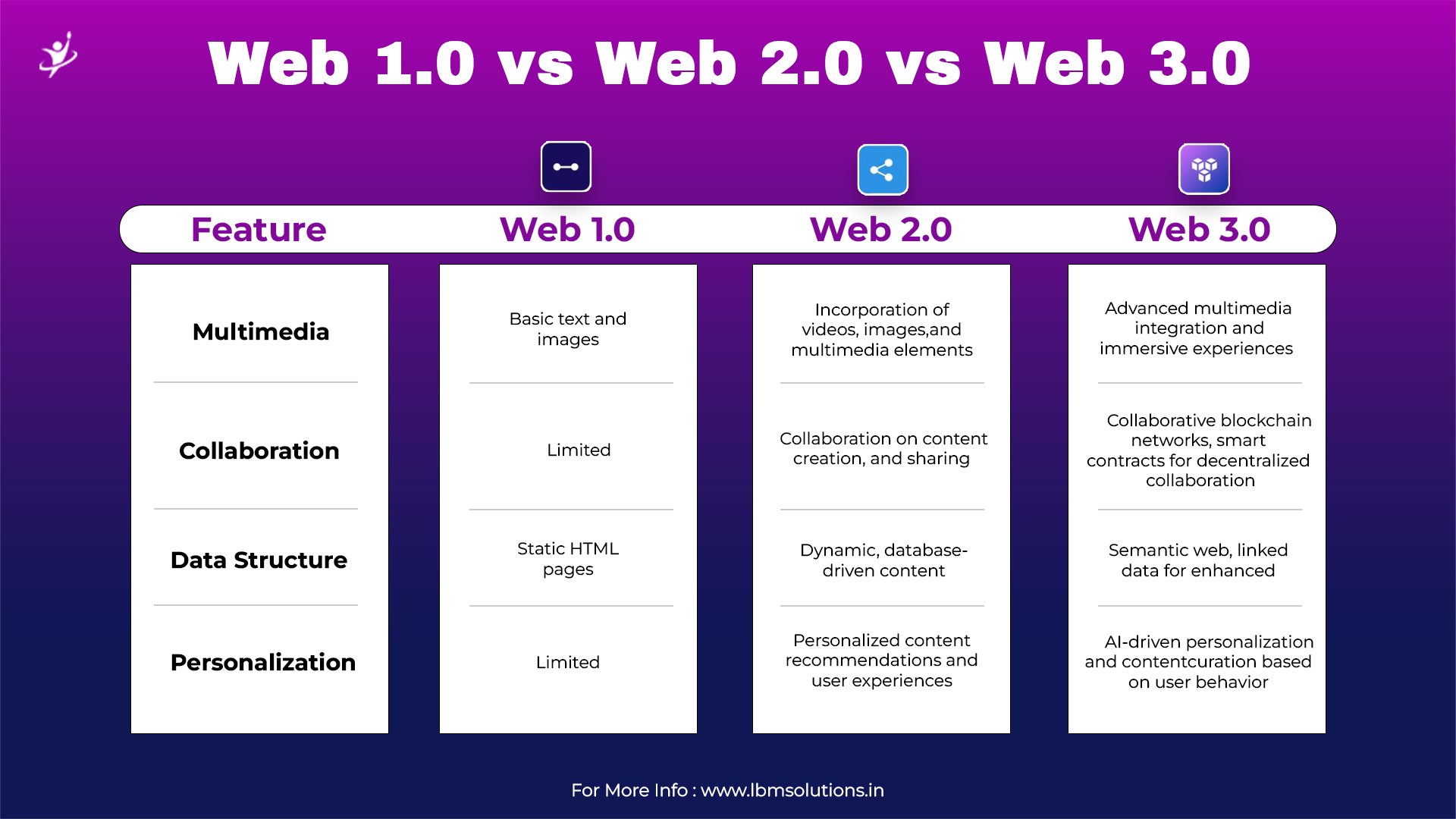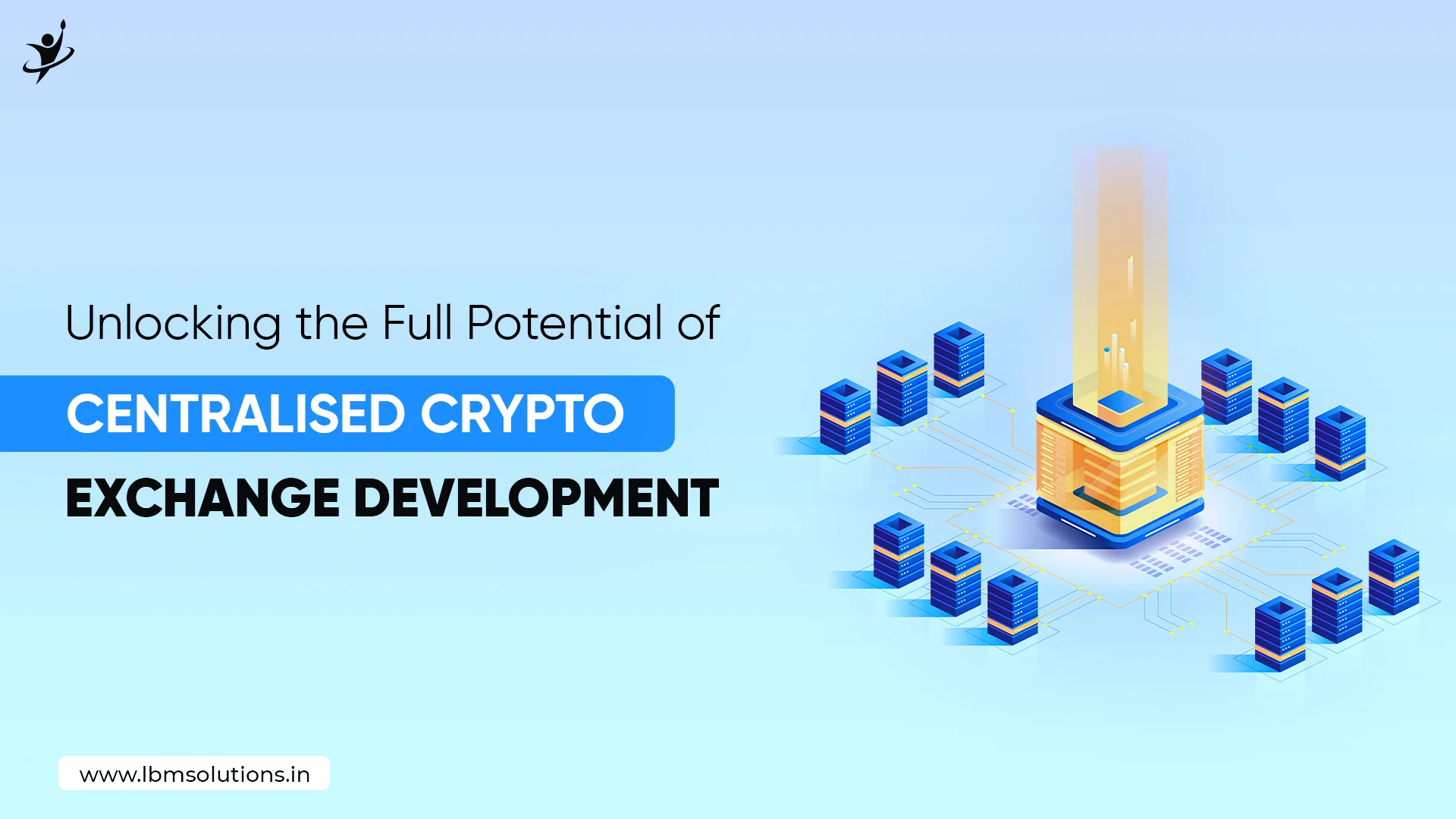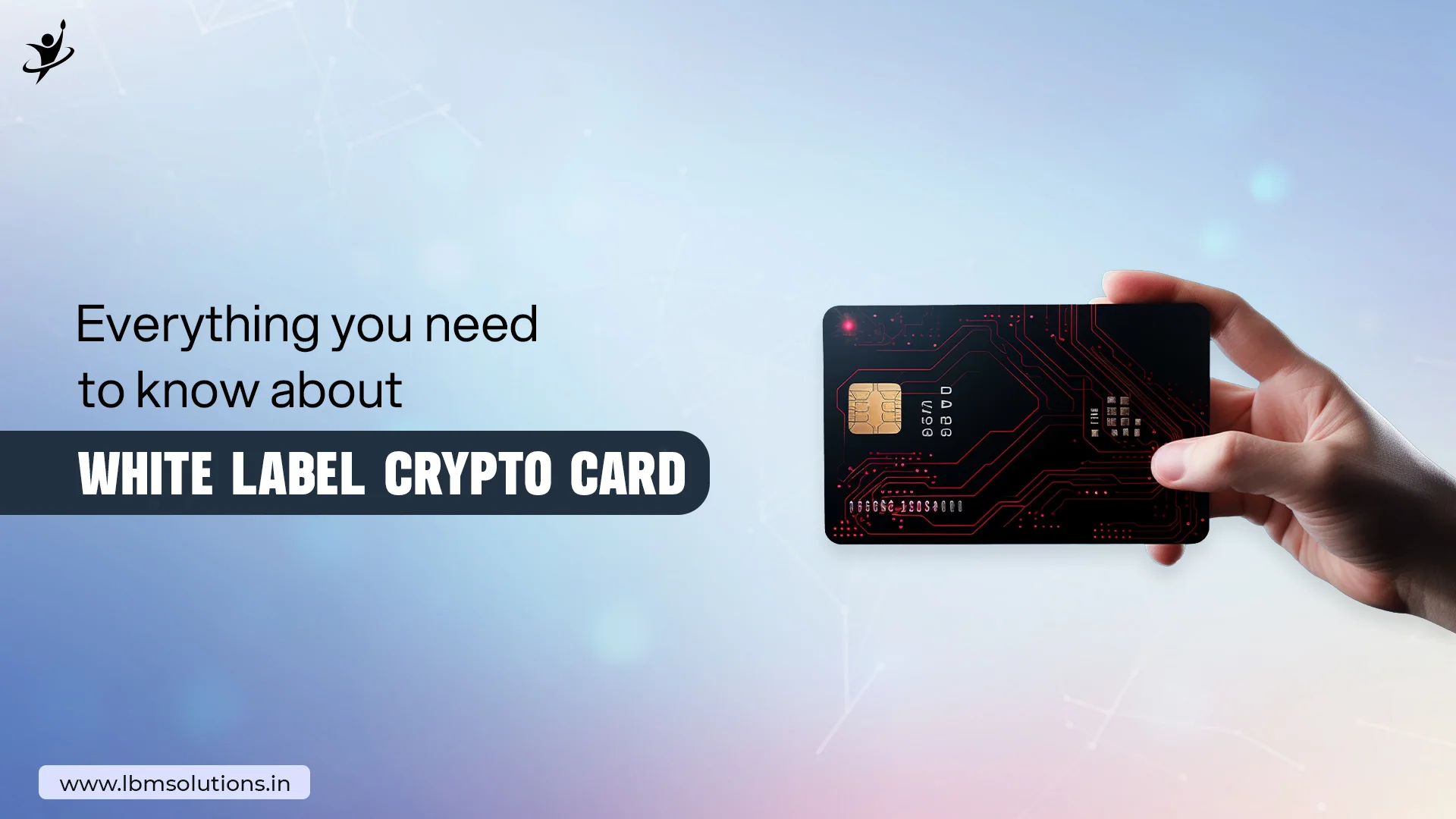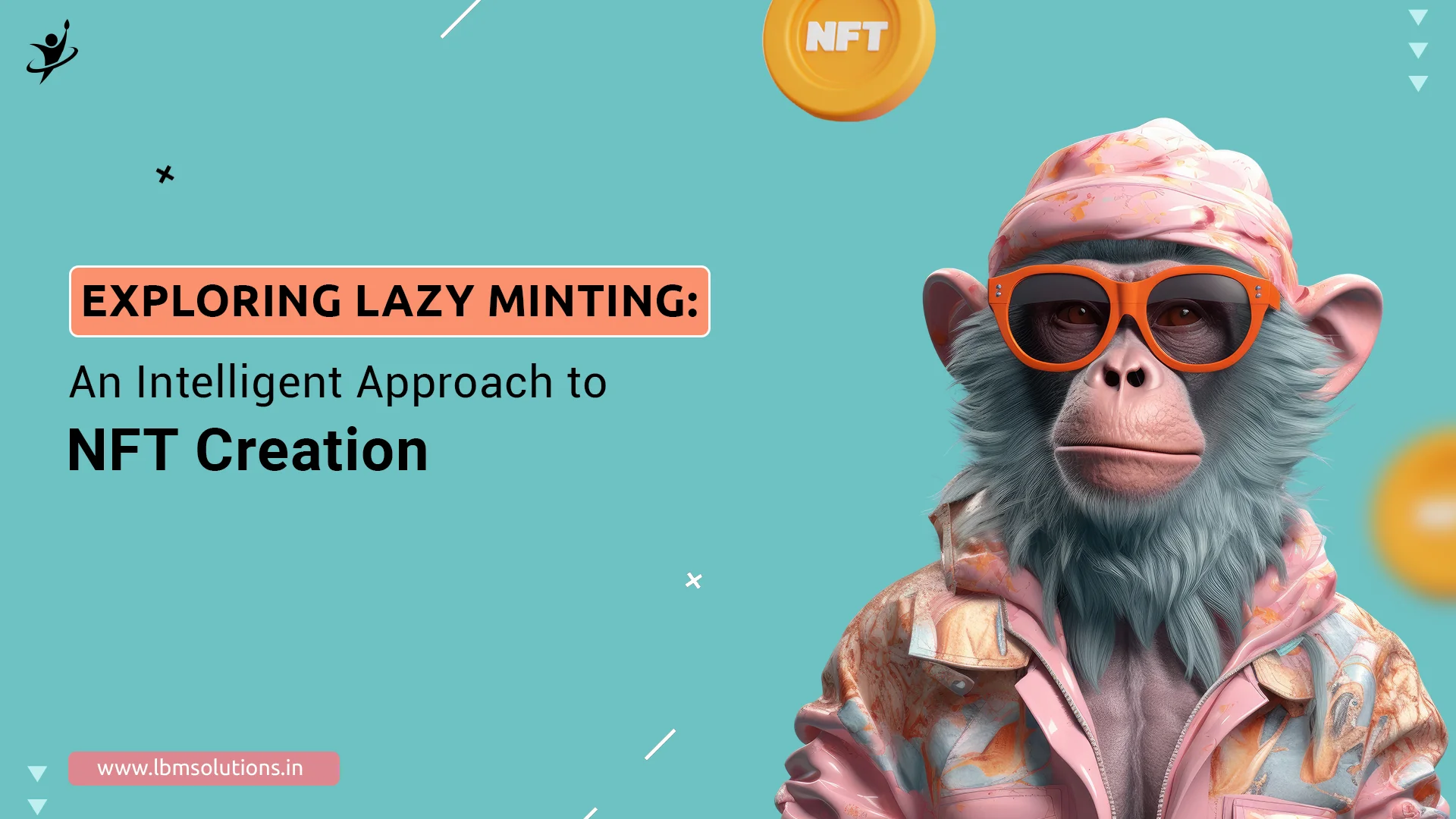Understanding Web 3.0 Technology
Web 3.0, often known as the Semantic Web or read-write-execute era, represents the exciting future of the internet since around 2010. Thanks to Artificial Intelligence (AI) and Machine Learning (ML), computers can now process data much like humans, making it possible to create and distribute tailored, valuable content based on users’ unique needs.
When it comes to Web 3.0, it’s all about decentralization. In simpler terms, it means that unlike Web 2.0, where apps rely on a single server or database managed by one cloud provider, Web 3.0 apps work differently. They’re built on blockchains, which are like decentralized networks made up of many peer-to-peer nodes or a mix of both. These apps are called decentralized apps (DApps), and you’ll often hear this term when working with the best blockchain development company around. The cool thing is that network participants and a suitable blockchain development company get rewards for providing top-notch services, making sure the decentralized network remains secure and stable.
Merging Web 3.0 in Cryptocurrencies
Let’s break down Web 3.0 technologies and their connection to crypto in plain terms.
Web 3.0, often referred to as the next phase of the Internet, frequently intertwines with cryptocurrencies. This connection is all about rewarding those who contribute to these projects with digital assets known as tokens. So, what are these Web 3.0 tokens all about?
They’re the digital keys to creating a decentralized internet, offering various services like computation, storage, and more, services that big cloud providers traditionally controlled.
Take Livepeer, for example. It’s a protocol on Ethereum that connects video infrastructure providers and streaming applications in a marketplace. Or Helium, which encourages individuals and small businesses to provide wireless coverage and share device data via blockchain and tokens.
Now, here’s the exciting part, you can earn by participating in these protocols, whether you’re tech-savvy or not. People who use these services pay, just like they would to Amazon Web Services, ditching the unnecessary intermediaries.
Web 3.0 isn’t just about cryptocurrencies; it’s also diving into nonfungible tokens (NFTs) and digital currencies. Reddit is working on a system where users can control parts of their online communities using crypto tokens, like Reddit Karma, but on the blockchain. These tokens are your voice; they can’t be easily taken away, and they’re stored securely on the blockchain.
You’ll be surprised to know that this is just one piece of the puzzle. It’s like a corporate take on a Web 3.0 concept called Decentralized Autonomous Organizations (DAOs), where tokens are used to distribute ownership and decision-making power more evenly. The future of the Internet is evolving, and crypto is a big part of the journey.
Key Features of Web 3.0
Web 3.0 is a bit like the futuristic upgrade of the Internet, and while it hasn’t been officially defined, there are a few amazing things that make it stand out:
- Decentralization: This is a big deal in Web 3.0. In the older Web 2.0, computers search for data in one fixed place, like a single server, using distinct web addresses. But Web 3.0 is all about finding stuff based on what it is, not where it’s stored. Imagine your data isn’t held by giants like Meta and Google but scattered in different places. You’d have more control and power, even selling your own data on decentralized networks.
- AI and Machine Learning: Web 3.0 isn’t just about where you find stuff; it’s also about how smart the Internet gets. Think of it as the internet learning to understand things like humans do. All the credit goes to artificial intelligence (AI) and machine learning, which make the web way smarter. This isn’t just for better ads; it can lead to breakthroughs in medicine and new materials, making the internet way more useful.
- Connectivity and Ubiquity: Web 3.0 isn’t picky about where it goes. It’s all about spreading across applications and connecting with more and more everyday devices. Think about your smart fridge or the whole Internet of Things; accessing reliable Web 3.0 development services is making sure everything talks to each other. Web 3.0 is like the next-gen Internet that’s putting power back in your hands, making the Internet smarter, and making it work seamlessly with all the gadgets in your life. Everyone has started to realize that it’s a pretty exciting upgrade!

Role of Blockchain in Web 3.0
The emergence of Web 3.0, with cool examples like Siri and Alexa voice assistants, has showcased the power of machine learning and its potential to revolutionize internet services. Beyond just bringing machine learning and connecting devices through the Internet of Things (IoT) into the picture, Web 3.0 is all about operating on decentralized protocols.
So, you might be wondering, what’s the role of the chosen blockchain development company in all of this? Let us help you.
Blockchain is a key player in this transformation. Think of it as a game-changer in how we store and manage data. In simple terms, blockchain provides a special layer of data that is collectively managed, which can be thought of as a universal state layer. This layer serves as the foundation for creating a new way of settling value on the Internet. It enables the secure transfer of files, making peer-to-peer (P2P) transactions super efficient and eliminating the need for intermediaries.
In the Web 3.0 landscape, networks are all about interoperability, automation through smart contracts, seamless integration, and storing data in a way that’s resistant to censorship. So, blockchain isn’t just an accessory; it’s a driving force, shaping the future of the Internet. It’s making data safer and P2P transactions smoother. It’s a game-changer, and it’s here to stay.
Its permanence is driving the most reliable Web 3.0 and blockchain development companies towards growth and better inputs. Getting in touch with one can help you steer clear of the unrecognized challenges.
How are Companies Bridging the Gap Between Blockchain and Web 3.0?
Let’s dive into how blockchain fits into the exciting world of Web 3.0, and we’ll keep it simple!
One standout example of Web 3.0 in action is Follow. They’ve brought blockchain into play to create a groundbreaking social protocol for the next generation of Web 3.0 development services.
What’s so intriguing about it?
Well, Follow’s blockchain-based social protocol aims to give users complete control over their social identities and data. It’s all about putting the power back in the hands of the people using the platform.
In the world of Web 3.0, we’re also building new social structures that meet the core needs of the Internet. Here’s where blockchain shines. It removes the need for those trusted middlemen and allows networks to collectively remember user interactions and past events. This means more decentralization and more possibilities for the Internet. Blockchain is the force that’s making it happen!
The Bottom-Line
Web 3.0 is shaking things up in a good way. Technology advancements of course have downsides, however, managing them well can be enormously fruitful. Ask a technically sound employee and you’ll understand how blockchain and Web 3.0 have been a great addition.
The web’s getting smarter, too. The programs don’t slow down as more devices connect. Because of the massive web of digital ledgers called blockchain, people are able to access programs and digital documents from anywhere at any time. And, honestly, that is a huge relief.
With the emergence, growth, and betterment of Web 3.0, it’s all about a better online experience.












